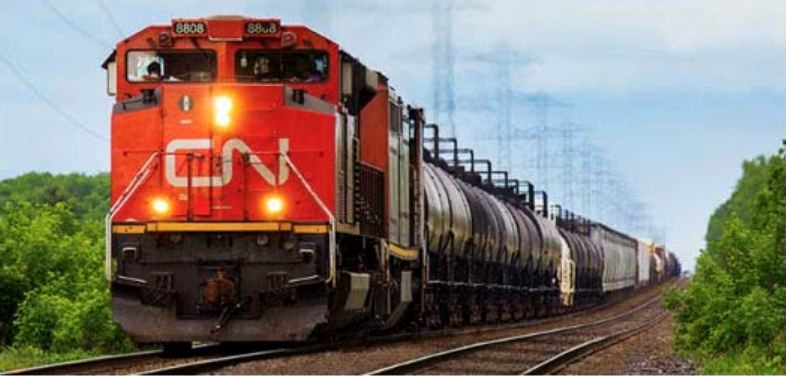The city and CN Rail have struck a working group to address well water vulnerable to spills and derailment near the downtown yards.
"Any time you have a vital public resource like drinking water in close proximity to something that admittedly carries inherent risk, like the railroad, we need to be at the table talking about that," said Emile Scheffel, CN's new B.C. regional lead of community affairs.
"So we've done exactly that."
The group first met in the last couple weeks, Scheffel told city council during his presentation Monday, titled "delivering safely and responsibly."
In March, council heard its water is vulnerable to spills and that derailment-related spills are the biggest threat to the waterway. The R. Radloff & Associates Inc. report said the city and CN Rail need to take a number of preventative steps to make sure the city's main well water source is no longer vulnerable to "catastrophic" damage.
Coun. Garth Frizzell noted some of the recommendations included reduction of train speeds, enhancement of track maintenance and advance notification of dangerous goods.
Prince George has a long history with CN Rail, but "I'm well aware it's not a perfect history," said Scheffel as he assured council that safety is a number one priority with the organization.
Safety is the right thing to do and good for the bottom line, he said, calling it a "double incentive."
The six-mile line of track near the wells is "pretty safe stretch," and has a bit of an uphill grade.
"Even if they were accelerating at full tilt, which they're not, they wouldn't be able to break probably 20 miles an hour until they get past those wells," said Scheffel.
The same week council was looking at the report in March there was a car derailment, Frizzell said, before asking for the cause.
Scheffel said it was still under investigation.
"This was a bit of a more serious situation. I don't have the cause," said Scheffel, who noted derailments in the yard are relatively common. At that slow speed it's a relatively safe place to have flat-tire derailment, he said.
The March report said Prince George had 11 rail "incidents" in 2013 - eight yard derailments, three collisions, and five dangerous good incidents - slightly down from the 13 reported incidents in 2012.
The tracks are inspected daily and must be logged with Transport Canada. There are multiple levels of accountability, Scheffel said, and the directive for more frequent reporting should enhance public trust.
Protective Direction 36 is the national directive that requires companies to report twice a year to municipalities about the dangerous goods going through the region and the percentage of railway cars with dangerous goods. In 2018, that will increase to quarterly reporting to emergency planning officials, like the fire chief, so municipalities can plan for possible disasters.
Scheffel said Prince George is a crucial part of its network, with 400 local jobs. In June, some Prince George employees lost their jobs, but CN declined to say how many at the time.



